My COVID-19 Vaccine Experience Was Low-Tech, And That's A Good Thing
I went to get my first of two COVID-19 vaccine shots this week, and I was surprised at how low-tech the whole situation ended up being. Any other time I've needed and received a shot of any sort in the past, it's been inside a doctor's office, so I wasn't sure what to expect, heading in to a decommissioned Shopko location utilized by local medical officials for this COVID-19 vaccination event.
Expectations
I expected to be asked a series of questions before I was administered a shot. I expected that I'd need to prove who I was, get my license scanned, and wait for my records to process before I was able to sit down with a medical professional.
I expected there to be problems. Over the past year, the public's faith in technology has been on shaky ground – especially when it comes to helping individuals navigate this pandemic. I remembered reading and writing about exposure notification apps like they were going to allow us to control the spread of COVID-19 in the very near future. That didn't happen – and it still hasn't happened.
For the average individual in the United States today, finding information about COVID-19 means searching Google. Finding helpful, factual information about COVID-19 requires that I visit the official FDA website in a web browser. There's so much room for error here, it's absolutely absurd.
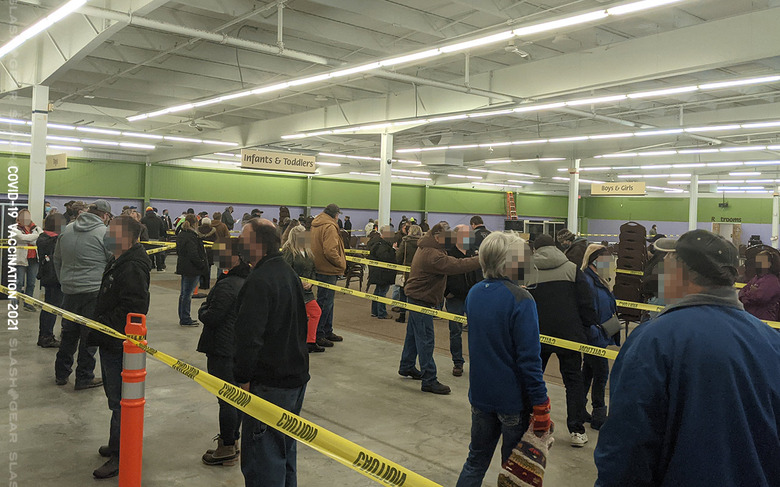
The line
The vaccine distribution event I attended opened at 10AM, and when I arrived at approximately 9:45, there was a line of well over 100 individuals waiting to be vaccinated. The line was arranged with traffic cones and caution tape, and a grid of chairs were spread across the majority of the former store's floor.
I assumed that a line this long would take hours to move through. I was pleasantly surprised at how quickly I made it from the back to the front. From the point at which I walked in the door to the moment I left, it was 1 hour and 14 minutes. Start from the moment the event was technically supposed to begin, it took almost exactly one hour.
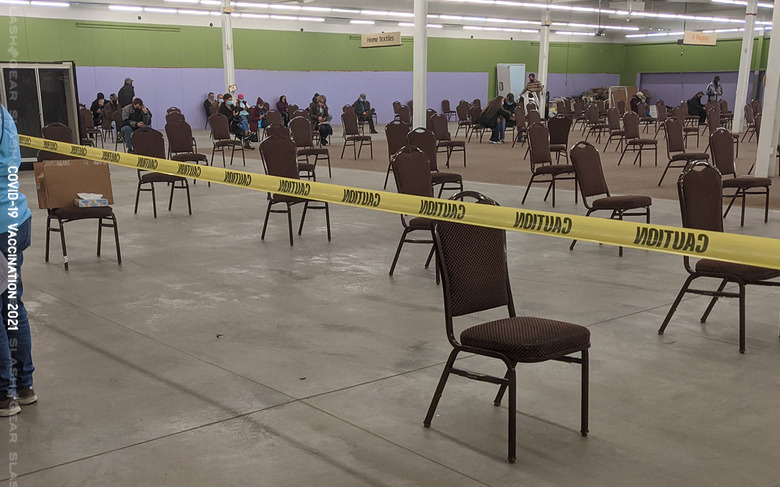
The paperwork
As this sort of event is new, I assumed there'd be a real mess with each individual needing to submit paperwork that'd then need to be verified, along with medical insurance, before they could proceed to getting a vaccination shot. In reality, this process was streamlined in the best way possible.
It was clear that the individuals handling this event had worked this process enough times that they'd become quite efficient at it. As each individual approached the front of the line, they were given the following:
• A sheet with questions about the individual*
• A list of side effects one might expect with the vaccine
• A small index card with the date and location of the vaccination
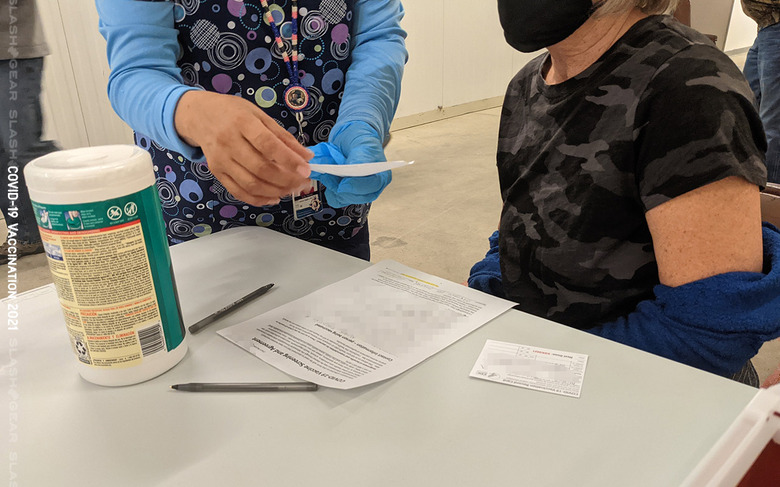
The index card was meant to be kept by the individual so they could easily track their vaccinations, both part 1 and part 2. Part 2 of the vaccination (the second shot) is meant to be given one month after the first. This index card included the date when that vaccination needed to be attained, and confirmation that this specific distribution location would be open and distributing part 2 of this vaccine on that day.
*Included on this list were questions about whether the individual had been given a vaccine in the past, current COVID-19 status, and proximity to other individuals that have had COVID-19 tests in the past.
This list also asked for the individual's mother's maiden name, and the individual's insurance information. It was made very clear throughout the process that no eligible individual would be turned away from receiving a vaccination shot, regardless of insurance status.
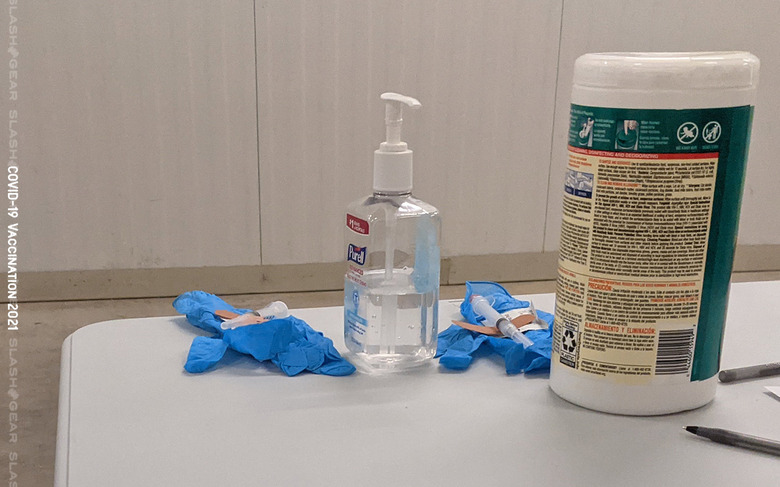
The Shot
There were several computers being used by the vaccination crew, but at no point did I have any direct interaction with said computers. The process likely required significant data entry work on the part of the people responsible for the computers, but for the individual receiving the vaccination, the entire process was simple and painless.
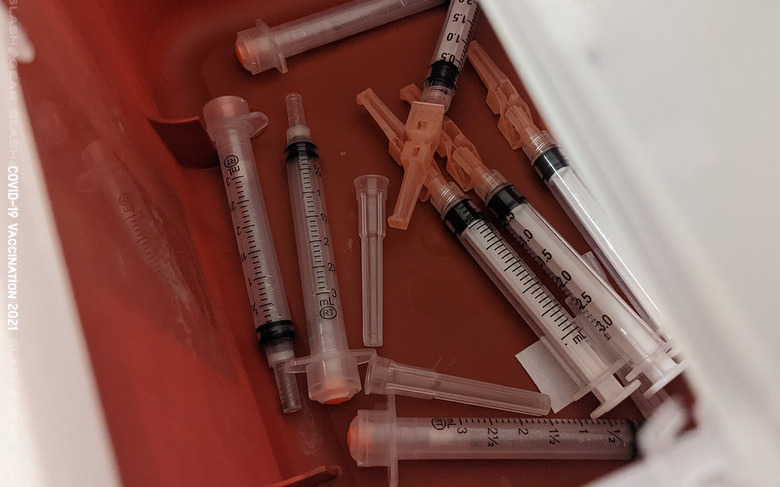
The shot itself was tiny. A medical worker took care to wear a new pair of medical gloves for each patient. I was asked to relax my arm, and suddenly it was done. The needle was so extremely tiny that I literally could not feel it enter my arm. It was if she'd suggested she was going to give me a shot, then suddenly she was placing the adhesive protective strip (Band-aid).
After the shot, I was asked to head out to the grid of chairs and have a seat for approximately 15 minutes. At the end of this time, I could leave. This last bit of time was a wait-and-see period meant to watch for any immediate side-effects from the vaccine. And that was that.
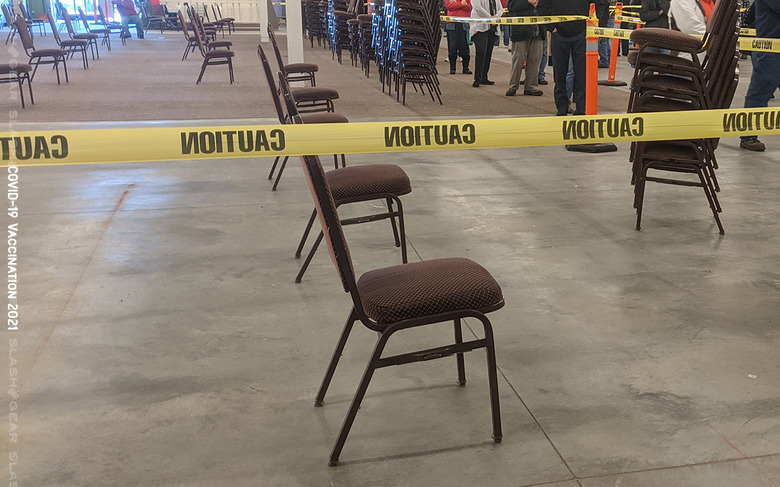
The process was decidedly low-tech. If the process required people to manually enter information on a computer, or attain a pile of medical records before arriving, or do much more than what was asked, I can't help but feel like some people would skip the process altogether.
But this process was streamlined. It was simple. It did not require anything unexpected, and I was left confident that I was well on my way to a much more COVID-19-resistant life.
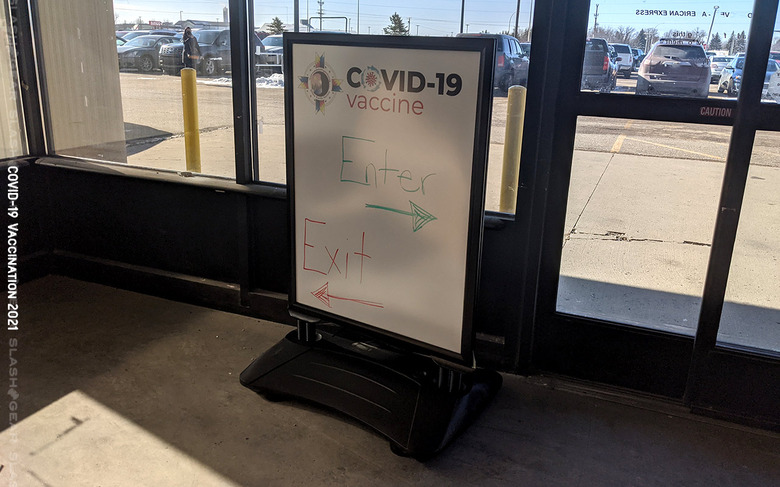
Bad and Good
The good part of this paper-first vaccination process is the speed at which vaccinations can be given. People aren't turned away, as they would be if this process were significantly slower.
The only potentially bad part of this process is the real room for error. Due in part to the publicly lackluster showing in tech with regard to security over the last few years, and the (likely essential) streamlining of this process, I can't help but worry a little about personal data privacy. Still, with so much of these vaccination events apparently being primarily paper-based, maybe there's a little room for tech still: a text message reminder about the second shot might be useful, rather than relying on people remembering to check their appointment card.
It is my hope that this process does not result in any unforeseen healthcare data privacy issues through the weeks and months it'll take to get the public vaccinated against COVID-19. Given the ease with which destructive anti-vax and conspiracy theory nonsense is spread, we could be in for disastrous results. Cross your fingers this process continues with at least as much success as we've seen already as we move toward COVID-19 immunity around the world.
